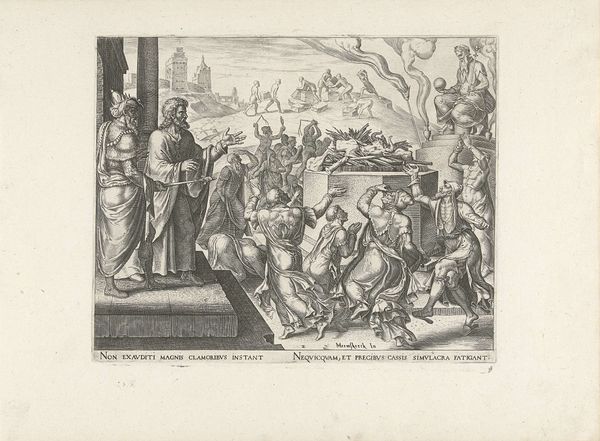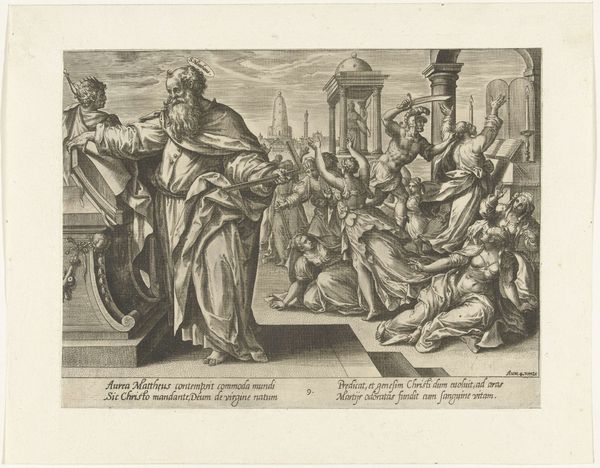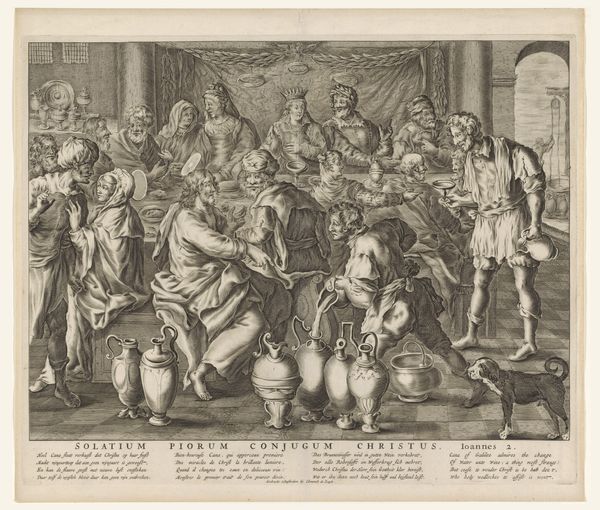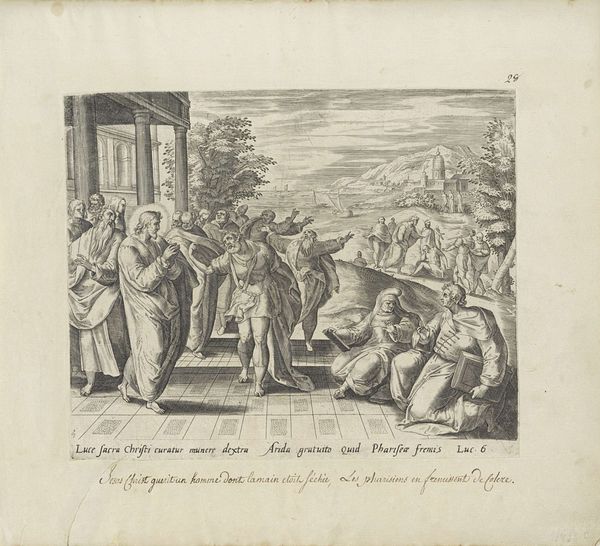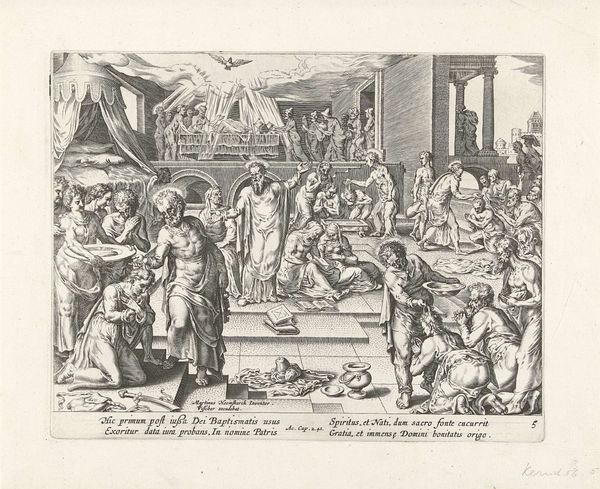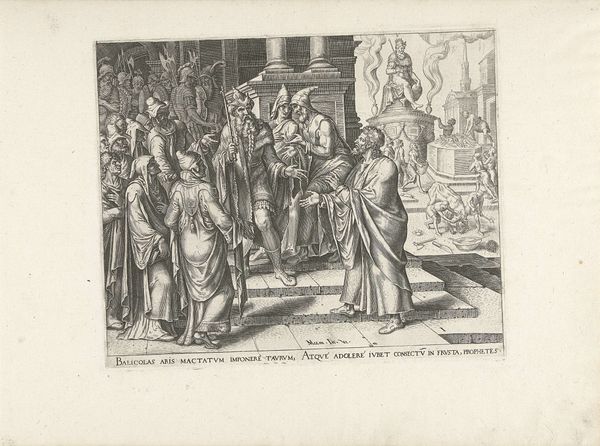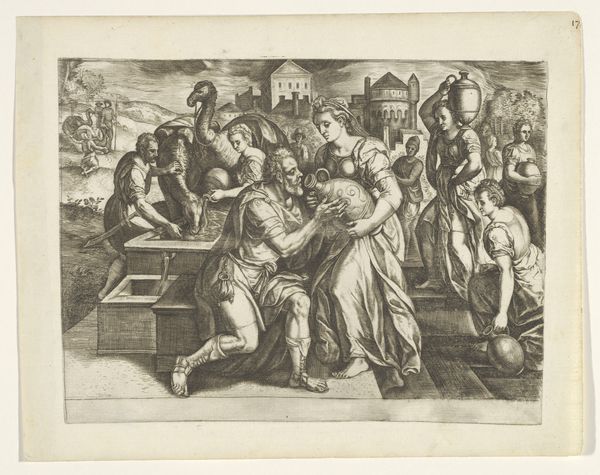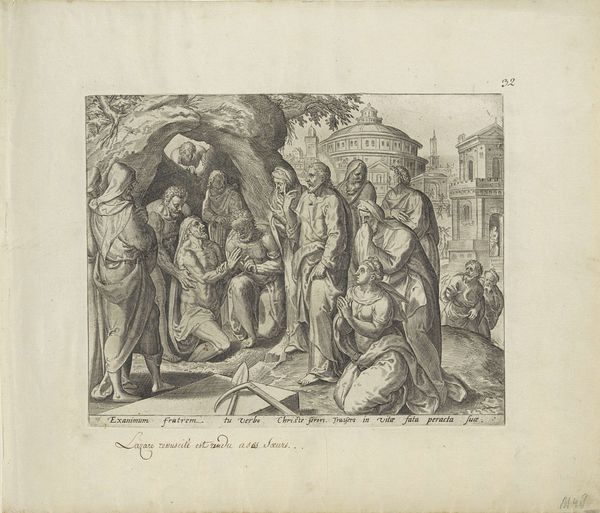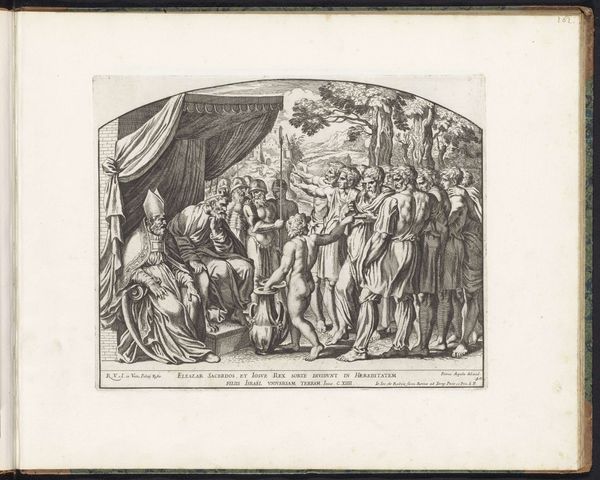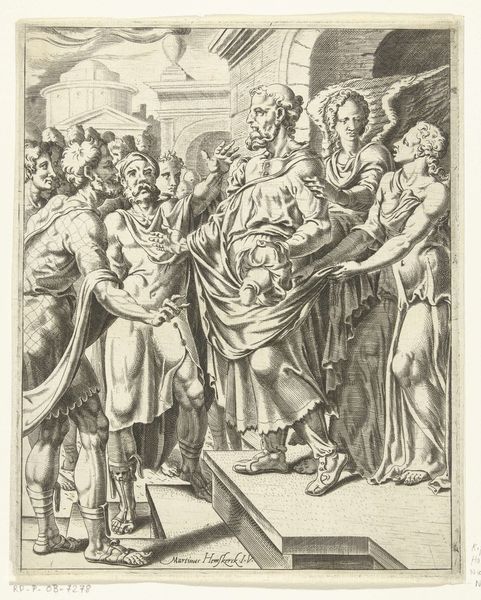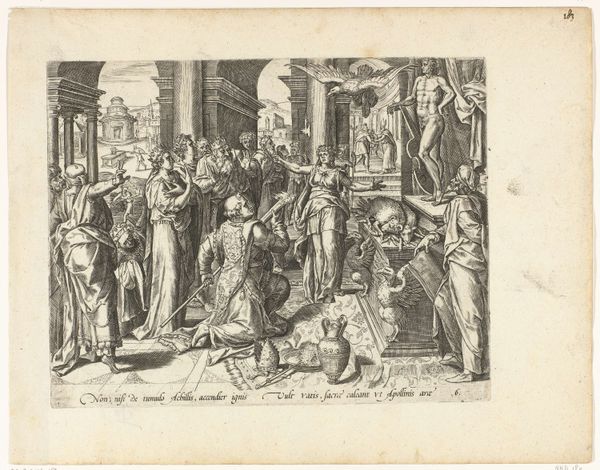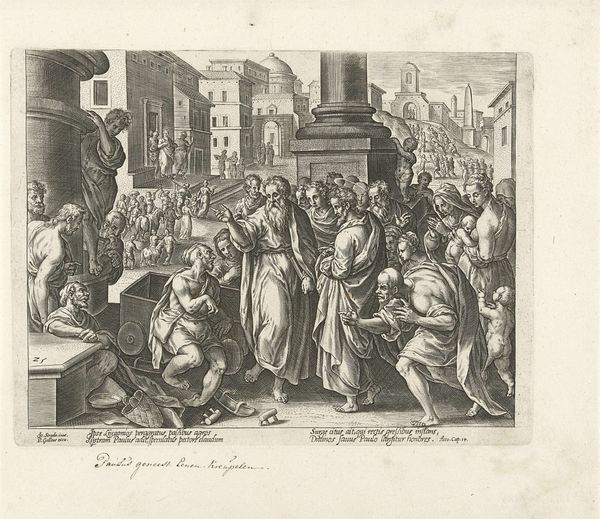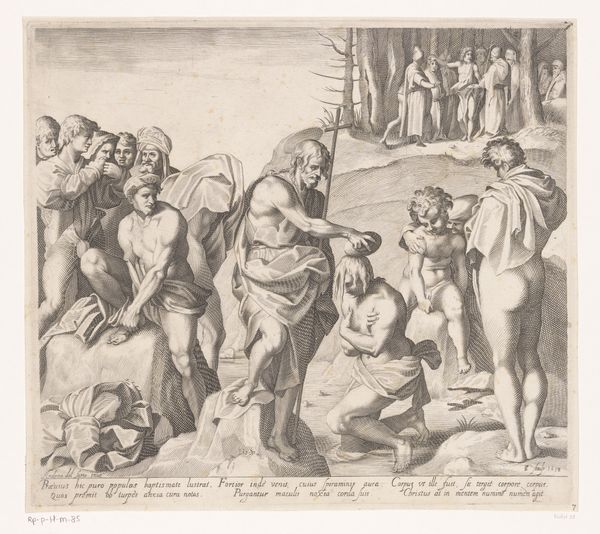
Dimensions: height 206 mm, width 269 mm
Copyright: Rijks Museum: Open Domain
Curator: Welcome. We’re standing before Hendrick Goltzius's "The Martyrdom of Bartholomew," created between 1577 and 1582. It's an engraving currently residing in the Rijksmuseum. Editor: Well, immediately the brutality jumps out. It’s raw, unflinching. The contrast is striking—almost a stage set for torture. The line work looks incredibly detailed too. Curator: The composition really pulls you in, doesn't it? Goltzius was a master engraver. Note how he uses the stark contrast not just for drama, but to guide the eye through the narrative. Consider the politics of religious imagery in that era, and the Reformation's effect on depictions of saints. Editor: I’m fixated on the executioners. Look at the exaggerated musculature and theatrical poses! But also notice how their tools are rendered; you can almost feel the texture of the blade. Was Goltzius concerned with celebrating this process of labor and craftsmanship as he revealed violence against flesh? Curator: Absolutely. The engraving medium itself becomes part of the story. The fine lines emphasize the graphic nature of the scene, and engraving as a print medium allowed wider distribution of such imagery, thus disseminating religious and moral messages. This was an era deeply preoccupied with public virtue and the dangers of heresy. Editor: It's all laid bare: both the saint’s faith and the mechanics of the instruments being employed. Is there also a subversive comment here? The tools of torture and faith, so intimately intertwined... it reveals this connection by the very lines and values used by the engraver, and perhaps a critique. Curator: That tension is certainly there. The placement of Bartholomew, almost stepping out of the frame and away from the horrific central action, is quite remarkable in its subtlety, given the direct subject. He's accepting it all. Editor: So, it’s an object lesson through the brutal act. It makes you think about the economics and means of production when images like these become ubiquitous, impacting and changing viewers in their consumption. It reminds us of faith’s price, or, from a materialist perspective, labor, oppression, and dissemination for varied beliefs. Curator: Precisely, this engraving gives a great overview of the socio-political conflicts from this time period. Editor: Very dark, yet also very fascinating in how this meaning is crafted.
Comments
No comments
Be the first to comment and join the conversation on the ultimate creative platform.
